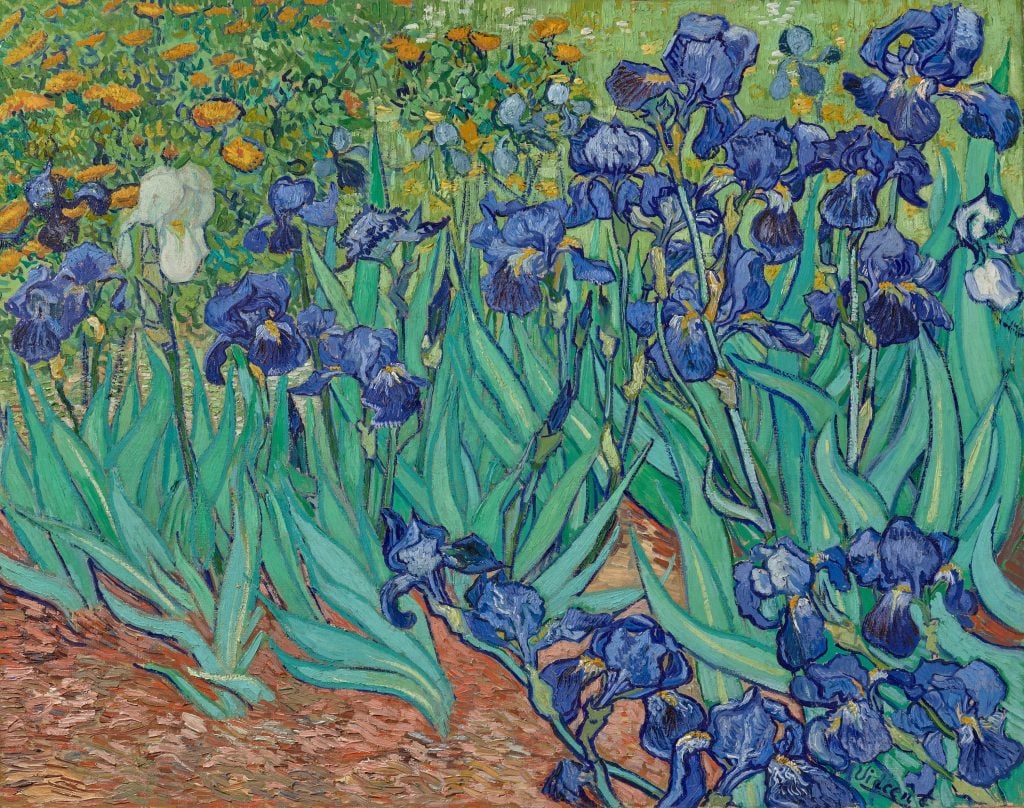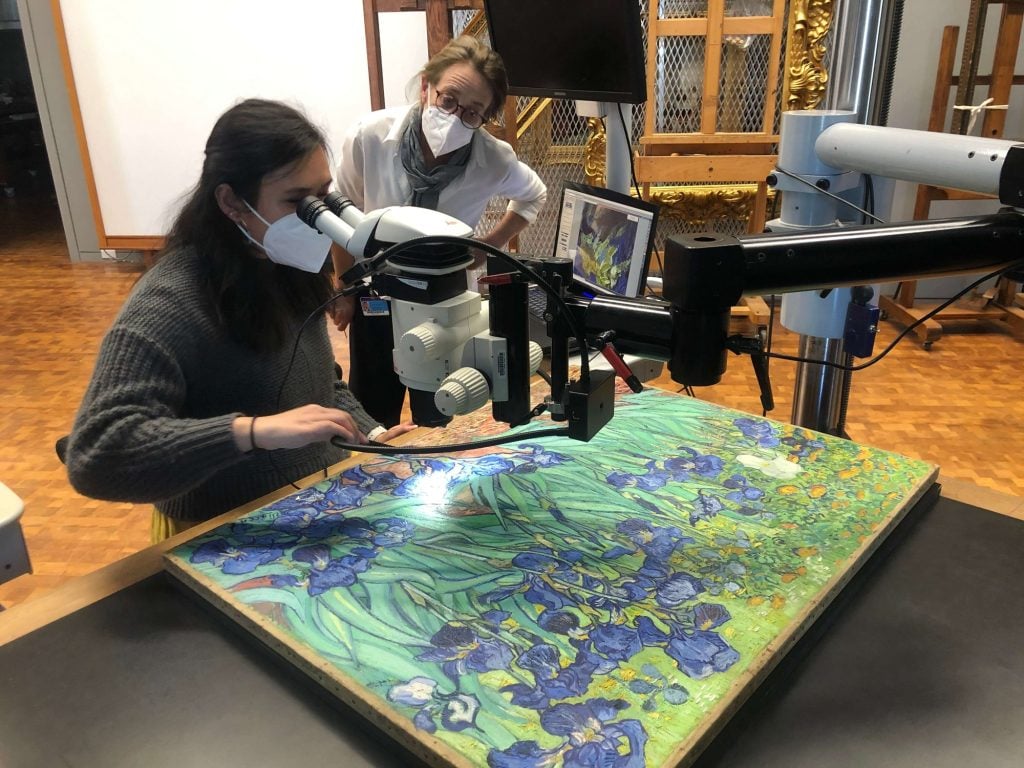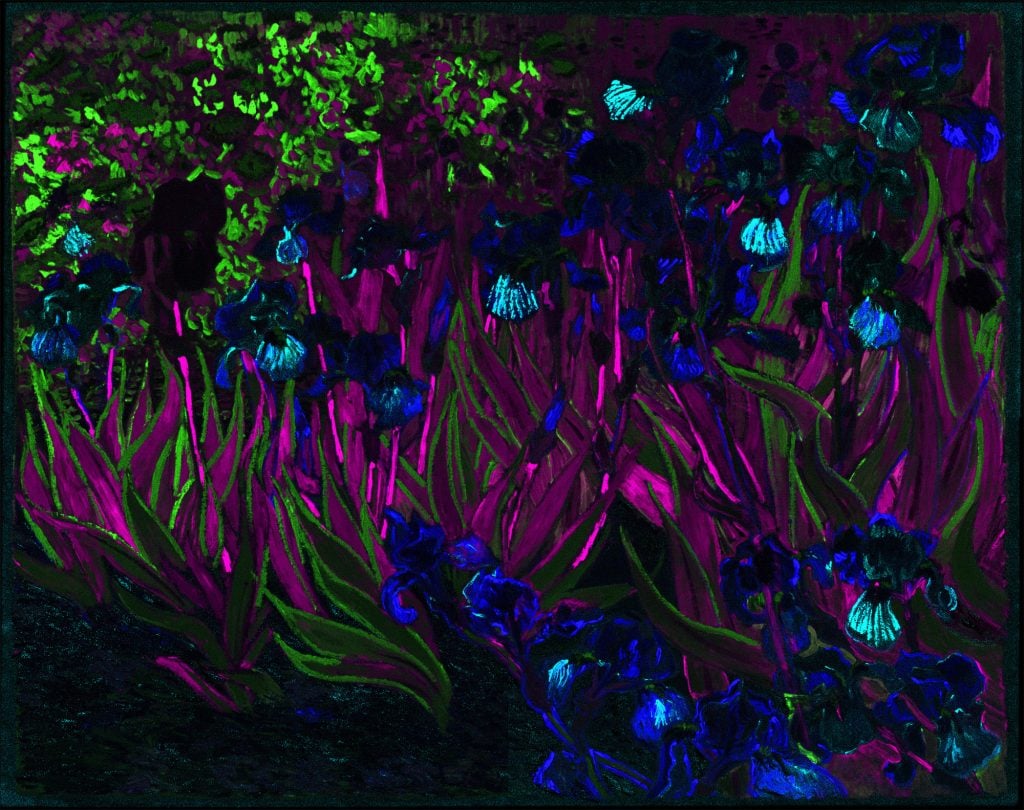Art & Exhibitions
Van Gogh’s ‘Irises’ Appear Blue Today, But Were Once More Violet, New Research Finds
A new show at Getty Center in L.A. will spotlight its latest analysis of the painting.

On May 8, 1889, Vincent Van Gogh checked himself into the psychiatric hospital in Saint-Rémy-de-Provence following a period of intense emotional instability. The next morning, he carried his paints, easel, and canvas into the hospital’s walled garden and began Irises, the flowers vivid in their springtime pomp and backgrounded by the russet yellows of dandelions.
It’s perhaps fitting that one of Van Gogh’s most prolific periods—he painted around 130 works at the asylum—began by capturing a flower symbolic of courage and hope. The stature and meaning of works painted during Van Gogh’s final year have changed in time, on the back of posthumous success wrought by his sister-in-law Johanna, shifting from avant-garde to revered to canonical.
So too for Irises, though here, change is also physical: today, its flowers appear blue when once they were violet.

Vincent van Gogh, Irises (1889). Photo courtesy Getty Museum.
Curators at Los Angeles’s Getty Center, which has owned the painting since 1990, had long suspected as much, but sequestering a collection highlight to conduct scientific analysis proved forever inopportune. The Getty’s closure in 2020 provided the opportunity with the museum set to present its findings in “Ultra-Violet: New Light on Van Gogh’s Irises.”
The inclination that Van Gogh’s irises were once violet stems from words of the artist himself. In a May 9 letter to his brother, Theo, Vincent describes the “reality” of life surrounded by “diverse mad or cracked people in this menagerie” before noting his “duty to work” and that he has begun on a painting of “violet irises.”

Former post-baccalaureate intern Michelle Tenggara and paintings conservator Devi Ormond studying Van Gogh’s Irises with a stereo-microscope in 2021. Photo courtesy of Getty.
To prove the case, researchers used non-invasive analytical techniques, such as X-ray fluorescence spectroscopy, to reveal the presence of a red pigment called geranium lake. Van Gogh created the violet by mixing together blue and red paints, including geranium lake, which is highly light sensitive and fades dramatically through exposure. Over time, the red has almost disappeared, leaving the impression of irises painted in a mottle of blues.
As illustration, Getty researchers have created a digital reconstruction of the painting to show how Irises might have originally looked, the contrast between the violet petals and their golden stamens rendered all the bolder.

X-ray fluorescence spectroscopy of Van Gogh’s Irises. Photo courtesy of Getty.
The exhibition delves deeper into the painting of Irises and its context through loans from the Van Gogh Museum in Amsterdam. This includes a replica of a red lacquered box with balls of yarn, the likes of which he used to explore relationships between colors, and the aforementioned letter between Vincent and Theo.
Another intriguing find? The presence of a pollen cone lodged in the heavy impasto paint of the painting’s lower left corner. It’s likely from an umbrella pine, which populate Saint-Rémy-de-Provence’s garden, with male cones releasing pollen each year in spring in the hope of fertilizing female cones.
“This exhibition beautifully illustrates how conservators and scientists at Getty collaborate to better understand and care for works of art,” Catherine Patterson, a scientist at the Getty Conservation Institute, said in a statement. “The reconstruction that came from this research allows us to see Irises in a new light and gain a better appreciation of the artist’s intention.”
“Ultra-Violet: New Light on Van Gogh’s Irises” will be on view at Getty Center, 1200 Getty Center Dr, Los Angeles, California, October 1, 2024–January 19, 2025.





